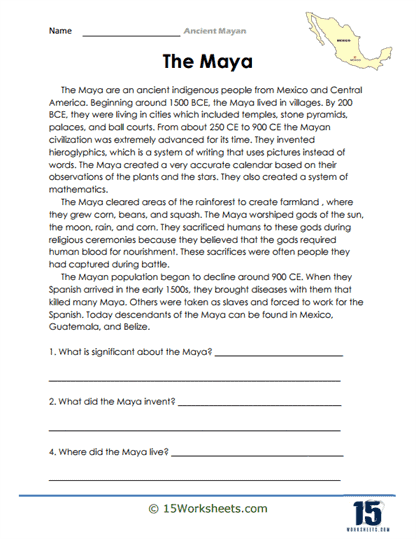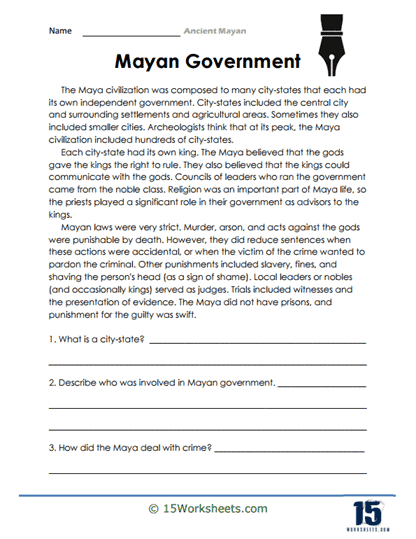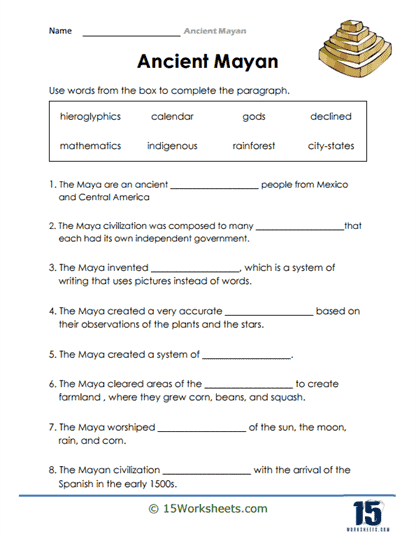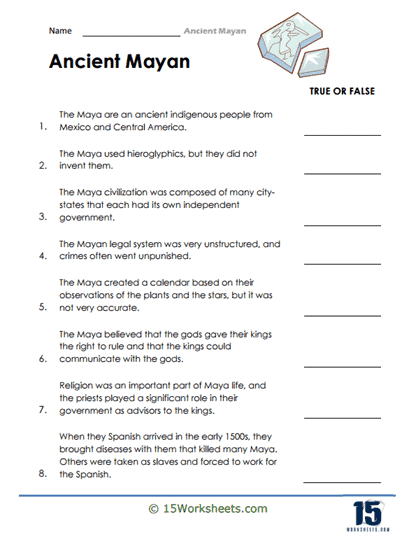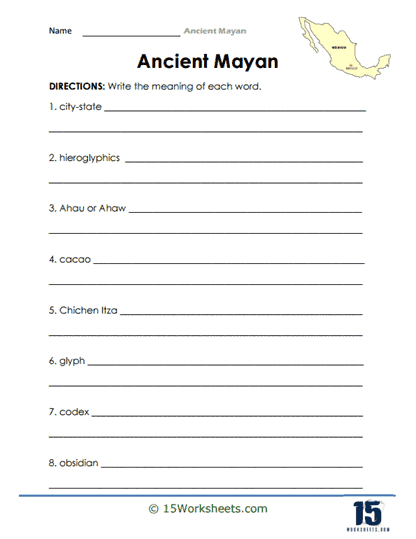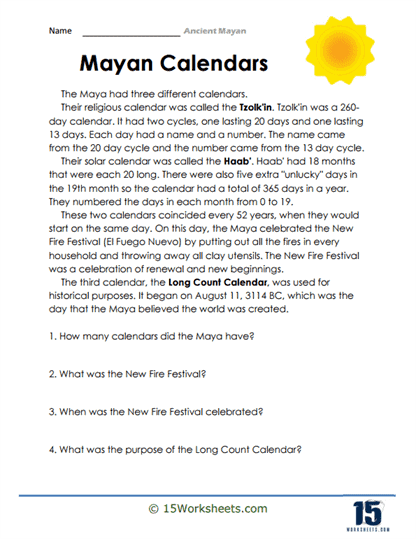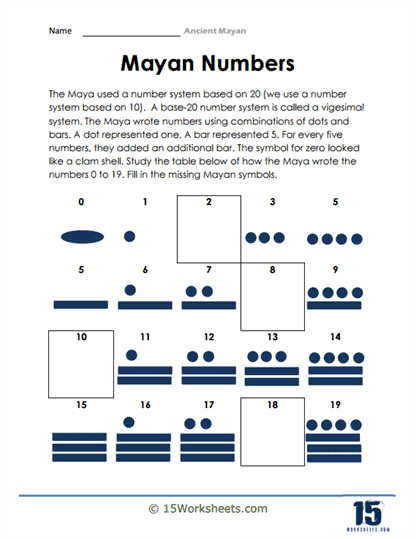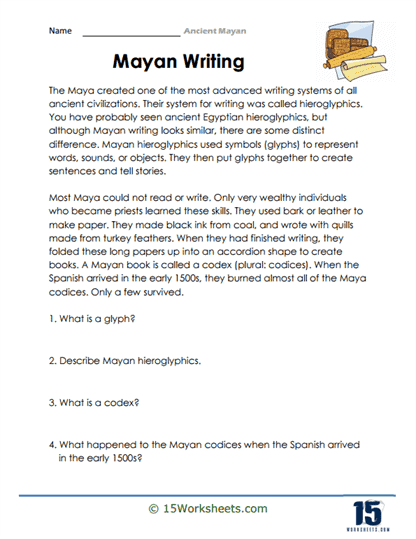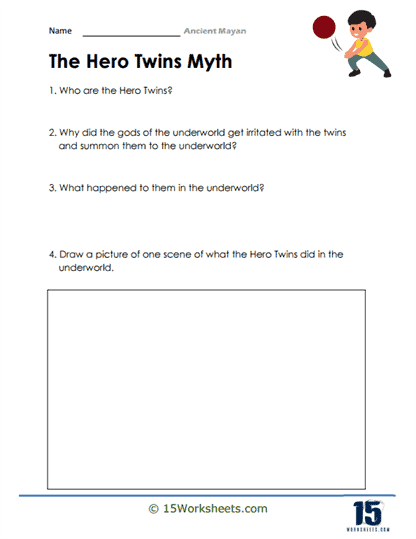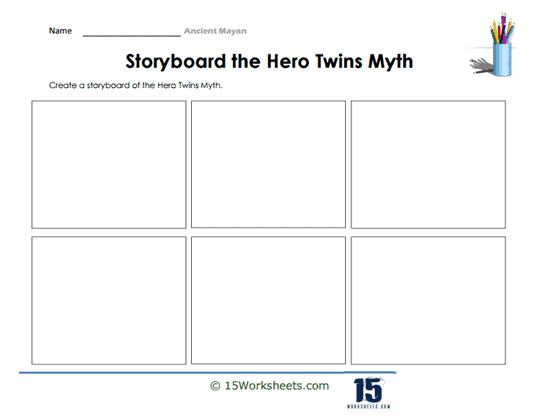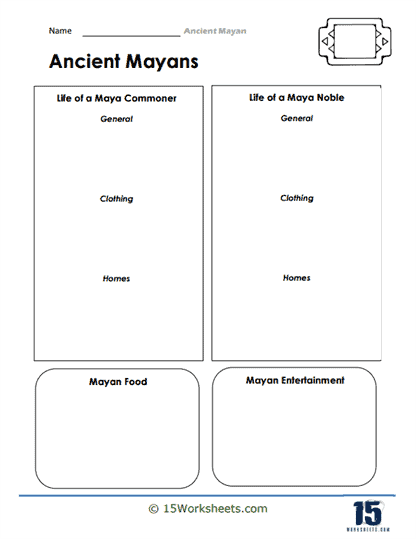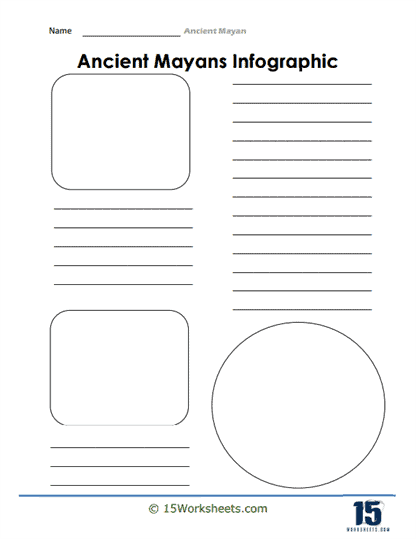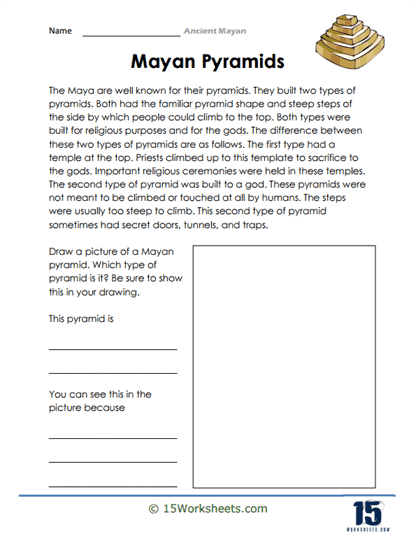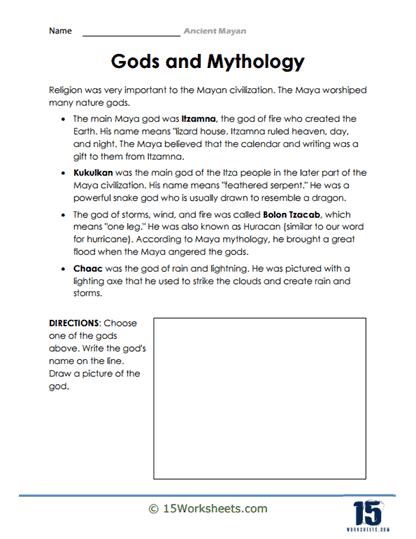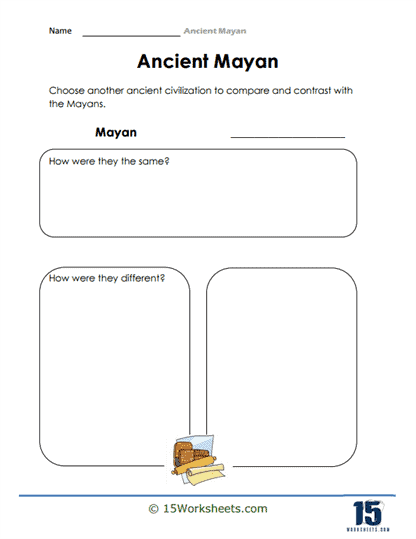Ancient Mayan Worksheets
All About These 15 Worksheets
Students dive deep into the captivating world of the Ancient Mayan civilization with this comprehensive series of 15 worksheets. This collection is designed to captivate their curiosity and deepen their understanding of the Maya culture, history, and achievements. From reading comprehension exercises to creative activities and research tasks, each worksheet provides a unique opportunity for students to explore different aspects of the Ancient Maya civilization. Through these worksheets, students will:
- Read thought-provoking passages that delve into various facets of Maya life, and answer comprehension questions to demonstrate their understanding and analytical skills;
- Showcase their knowledge by answering fill-in-the-blanks exercises and true or false questions;
- Understand the number system used by the Mayans and fill in the missing symbols to complete the numbers from 0 to 19;
- Showcase their creativity by drawing pictures or creating storyboards to depict the Hero Twins Myth, or through creating a visual infographic to show all they’ve learned about the Ancient Mayan civilization;
- Compare and contrast how the commoners and nobles lived;
- And exercise their independent research skills by effectively showing the similarities and differences of the Ancient Mayan and another ancient civilization of their choice.
Accomplishing these worksheets will transport students to the fascinating world of the Ancient Maya civilization, fostering a deep understanding and appreciation for its history, culture, and contributions to the world. Through engaging activities, students will develop critical thinking skills, broaden their knowledge of ancient civilizations, and gain insights into the extraordinary achievements of the Maya people.
The Ancient Mayan Civilization
The Ancient Mayans were a civilization that flourished in the regions of present-day Mexico, Belize, Guatemala, El Salvador, and Honduras between 2000 BCE and 1500 CE. They are known for their impressive architecture, advanced mathematics and astronomy, intricate writing system, and complex social and political structures.
The Mayan civilization is believed to have originated in the Yucatan Peninsula of Mexico and reached its peak during the Classic period from 250 CE to 900 CE. During this time, the Mayans built impressive cities and monumental structures, including pyramids, palaces, and temples.
The Mayans had a complex social and political system, with each city-state ruled by a hereditary king or queen who was believed to be a divine ruler. The Mayans were skilled farmers, cultivating crops such as maize, beans, and squash using advanced agricultural techniques such as terracing and irrigation.
The Mayans also made significant contributions to mathematics and astronomy. They developed a sophisticated calendar system that incorporated both solar and lunar cycles, as well as a numerical system that included the concept of zero. The Mayans also had an advanced understanding of astronomy, using their knowledge to create accurate predictions of celestial events such as eclipses.
The Mayans were skilled artisans and craftsmen, creating intricate pottery, textiles, and jewelry. They also had a complex system of hieroglyphic writing, which was used to record historical events and religious beliefs.
The decline of the Mayan civilization is still a topic of debate among scholars, but factors such as overpopulation, environmental degradation, warfare, and political instability are believed to have contributed to its collapse. Despite their eventual decline, the legacy of the Ancient Mayans continues to fascinate and inspire people today.
The decline of the Ancient Mayan civilization is still a topic of debate among scholars, and there is no one definitive answer to why the Mayans ultimately disappeared. However, there are several theories that have been proposed to explain their decline.
One theory is that the Mayans suffered from overpopulation and environmental degradation, which led to a decline in agricultural productivity and a scarcity of resources. This, in turn, could have led to social unrest, political instability, and eventually the collapse of the civilization.
Another theory is that the Mayans experienced a series of droughts, which severely impacted their ability to grow crops and led to widespread famine. This could have caused social and political upheaval, as well as increased warfare and competition for resources.
There is also evidence that the Mayan civilization was impacted by outside forces, such as invasion and conquest by other Mesoamerican groups, including the Toltecs and Aztecs. These conflicts could have weakened the Mayan civilization and contributed to its eventual collapse.
Finally, some scholars believe that a combination of factors, including environmental degradation, overpopulation, warfare, and political instability, all played a role in the decline of the Mayan civilization. Ultimately, the exact cause of the Mayan collapse is still a subject of ongoing research and debate among historians and archaeologists.

